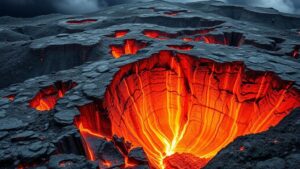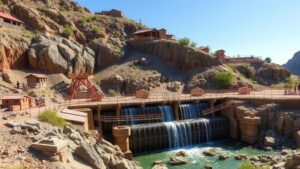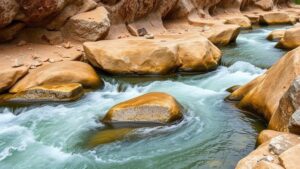The Relationship Between Heavy Rains and Gold Redistribution
The Relationship Between Heavy Rains and Gold Redistribution
The natural world often operates in intricate patterns, and the impact of heavy rainfall on geological processes and mineral redistribution is a prime example. This article explores how torrential rains can influence the movement of gold within a given environment, detailing the mechanisms of erosion, transport, and sediment deposition that facilitate this redistribution. Understanding this relationship is critical, particularly for the mining industry and environmental scientists who study both resource allocation and ecological impacts.
The Mechanisms of Gold Redistribution
Gold, being a dense and relatively inert metal, is often found in alluvial deposits, which are formed by the erosion and weathering of gold-bearing rocks. Heavy rains contribute to this process in several key ways:
- Erosion: Intense rainfall can initiate erosion by displacing soil and rocks, especially in hilly or mountainous terrains. This erosion can expose gold veins and allow for its movement into rivers and streams.
- Runoff: After heavy rains, surface runoff can pick up loose gold particles from areas where gold is naturally distributed. As this water flows into nearby streams and rivers, it carries these particles away, redistributing them downstream.
- Transport: Sediment transport occurs as water flows mix and interact, moving gold particles over significant distances. Hydraulic action, the force of moving water, plays a crucial role in displacing and carrying gold with sediment.
- Deposition: Eventually, as the velocity of flowing water decreases, gold and associated sediments are deposited in new locations, often forming new alluvial gold deposits.
Case Studies and Examples
The significance of heavy rains on gold redistribution can be illustrated through various case studies. A notable example is the Klondike Gold Rush during the late 19th century. Heavy spring thaws and subsequent rains led to increased river flows, which eroded riverbanks and exposed gold-bearing gravels, facilitating easier access for miners.
In more recent times, the effects of heavy rains were observed in the artisanal mining regions of West Africa. Studies conducted in countries like Ghana and Burkina Faso showed that heavy downpours during the rainy season can disrupt land and sediment composition, leading to new concentrations of gold in riverbeds where miners can achieve higher yields.
The Environmental Impact
While the redistribution of gold can be financially beneficial for certain sectors, it also poses environmental concerns. Increased erosion can lead to sedimentation in waterways, which adversely affects aquatic ecosystems. Heavy rains can cause landslides and introduce pollutants into streams that can drastically alter water quality.
Statistical Implications
Data from the United States Geological Survey (USGS) indicates that regions experiencing heavy precipitation see an increase in gold production rates, with some studies estimating that annual rainfall can correlate with a 20-30% increase in gold recovery for artisanal miners. This statistic reinforces the importance of weather patterns in the mining sector.
Addressing Concerns
One might wonder about the sustainability of relying on heavy rains for gold redistribution. While gold accumulation through natural processes is a short-term benefit, it raises questions about long-term impacts on land use and natural habitats. Responsible mining practices must be enforced to mitigate environmental degradation, including:
- Useing measures to control erosion and sediment runoff.
- Monitoring waterways to ensure the health of aquatic ecosystems is protected.
- Promoting rehabilitation of mined areas to restore ecological balance.
Conclusion
The interplay between heavy rains and gold redistribution is complex and multifaceted, influencing both natural ecosystems and human economic activities. As the effects of climate change persist, understanding these dynamics will become increasingly important for sustainable mining practices and environmental conservation. Stakeholders in these areas must prioritize informed decision-making to balance economic benefits with ecological integrity.
In summary, recognizing the role of heavy rainfall in gold distribution not only aids resource extraction but also emphasizes the need for sustainable environmental practices in mining. By leveraging both knowledge and technology, we can guide the industry towards a future that respects natural processes while fulfilling economic needs.



